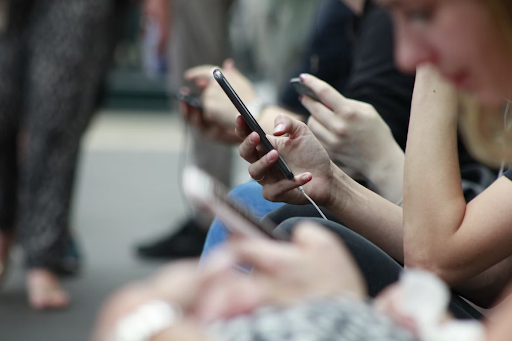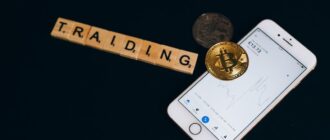Unplugging from technology can bring a myriad of physical and mental health benefits that often go unrecognized. In this article, we explore 10 reasons and associated topics to consider when looking to engage in a digital detox. From the physical effects of blue light emissions to better overall organization and productivity, the importance of taking a break from time to time cannot be overstated.
Make sure to visit https://energycasino.com/ja/virtual-sports, where you can find a wide variety of casino games.
With research backed evidence, readers will learn about long-term benefits, digital impediments that may have gone unnoticed, and how to prepare for an effective digital detox. Join us as we explore the benefits of unplugging and discover how stepping away from our screens can help lead to healthier and more productive lives.
- What is a Digital Detox?
- Why Should You Do a Digital Detox?
- Improved Mental Health
- Enhanced Focus & Productivity
- Better Sleep Quality
- Meaningful Connections in Real Life
- More Time for Things That Bring You Joy
- Signs That You Might Need a Break From Technology
- How to Do a Digital Detox
- Set Realistic Goals
- Create Healthy Boundaries & Limits
- Occupy Yourself with Things That Nourish Your Mind & Body
- Reward Yourself for Following Through
- Tips for Your Digital Detox
- Summary
- Frequently Asked Questions
- Is digital detox effective?
- What happens during a digital detox?
- How long should digital detox last?
- What does digital detox do?
- What is an example of digital detox?
What is a Digital Detox?
A digital detox – what is it? It’s a period of time where we take a break from our digital devices and technology to reduce the amount of time spent online. We can do this in many ways, like media fasts, content fasts or tech detoxes. During these times, we avoid using social media apps, computers, TVs and smartphones so that our physical and mental health are not overwhelmed by too much technology.
The purpose of a digital detox is to give our bodies and minds some breathing room; it helps us bring balance back into our lives while reducing stress levels caused by overstimulation from tech use. And don’t worry – you don’t have to completely disconnect! You can still stay connected, but just be intentional about how much you’re using your devices.
Studies suggest that there are plenty of benefits when taking part in a digital detox: improved mental well-being (according to Clinical Psychology journal), better focus and productivity as well as improved sleep quality. Plus more meaningful connections with people in real life and more time for activities that make us happy! So why not try out a digital detox today? Taking some time away from technology will help keep your mind healthy!
Why Should You Do a Digital Detox?
With the introduction of digital technologies, have you ever felt overwhelmed? A digital detox provides an opportunity to hit the reset button and take a break from technology. It’s a chance to disconnect from devices, be present with your own thoughts, and cultivate meaningful connections with yourself and others. Think of it as taking a deep breath in fresh air – allowing for time to reconnect with yourself and the world around you.
Improved Mental Health
A digital detox – disconnecting from digital devices and technology for a period of time – can be beneficial for your mental health. But how?
A study published in the Journal of Social and Clinical Psychology found that students who took a break from social media experienced improved moods, better productivity, and reduced anxiety. Plus, passive consumption of social media was linked to increased depression.
So why not take a break? Doing so could reduce stress, improve focus, increase productivity, and help you sleep better. It’s time to unplug and reconnect with the real world!
Enhanced Focus & Productivity
Taking a break from digital devices can help improve productivity due to the reduced time spent scrolling, liking, posting, or surfing the internet. Technology use can impact job satisfaction, job stress, and feelings of overwork, and studies have shown that increased technology use can lead to decreased job satisfaction and increased job stress.
By taking a break from technology and creating boundaries, individuals can shift their focus to work tasks and increase productivity.
Better Sleep Quality
Exposure to blue light from digital devices such as computers, televisions, and mobile devices has been associated with disrupted sleep. A study found that people who use their digital devices in the evening are more likely to experience poor sleep quality, inadequate sleep, and excessive daytime sleepiness.
To improve sleep quality, it is recommended to limit mobile device usage before sleep and turn off one’s digital devices by setting them to airplane mode for a few hours before bedtime. Not only will this help reduce the blue light emitted from the screen, but it can also help reduce the temptation to check emails or notifications after hours, which can disrupt sleep cycles and cause poor sleep quality.
Meaningful Connections in Real Life
Excessive phone use can lead to a variety of physical problems including eye strain, dry eyes, blurry vision, teary eyes, headaches, lower back and neck problems.
Taking a vacation or other form of travel can be a great way to separate from technology and create distance from obligations, relationships, and old habits. Additionally, the natural constraints of travel can facilitate time away from technology and provide an opportunity for meaningful face-to-face conversations with friends and family.
Phone use can also create emotional rifts between people who regularly spend time together. When conversations are taking place, the mere presence of a cell phone can deter conversation quality and cause individuals to feel disconnected. Taking a break from technology can help foster meaningful connections in real life, allowing people to be present with one another and creating opportunities for meaningful conversations.
More Time for Things That Bring You Joy
Taking a digital detox is like taking a break from technology and being alone with your own thoughts, without the distraction of notifications or the pressure to be available to others. It’s an opportunity to find out what matters in life and what brings you joy.
Have you ever felt overwhelmed by social media? Constantly scrolling through other people’s posts can create feelings of envy and inadequacy, as well as a sense of pressure to “keep up” with the digital world. A digital fast can help remove these unhealthy comparisons and instead focus on your own life goals.
A content fast involves abstaining from watching television, movies, reading magazines and books, consuming online media, listening to the radio or music – all completely avoided during this period. This may also involve not using any apps or websites, as well as disconnecting from social media – which can be difficult at first but will give you a chance to unplug from the digital world.
During this time it’s important to nourish your mind and body by doing activities such as reading, journaling, getting outside into nature or taking up a new hobby – all things that bring true joy and happiness!
Signs That You Might Need a Break From Technology
Do you feel like you constantly need to be connected to technology? Are you overwhelmed by the mere presence of your cell phone? Do you find yourself being disrupted in your sleep or not being able to tear away from the digital screens? If so, you might need a digital detox.
A study published in 2017 found that 70% of participants checked their social media on their phones while in bed, while 50% of teens reported feeling addicted to their mobile devices. If you’re overdoing it with technology, it can interfere with your work, relationships, mental and physical health, or even your finances. The compulsion loop is often a major culprit in tech overuse, as we may not even realize it at the time.
Interacting with technology on a regular basis can also interfere with interpersonal connections. The presence of a phone can have an adverse impact on how close people feel and the quality of their conversation. A study corroborated this fact. Additionally, nighttime tech use is linked to an increased body mass index. In addition, teen respondents reported checking their devices hourly, and conversations about personally meaningful topics were most affected by the presence of a phone.
Photo filters have also been linked to poor self-esteem and self-image. Smartphones have been found to reduce the likelihood of smiling at someone in social interactions, and people may do certain activities out of fear of missing out, such as overcommitting to social events or constantly checking devices for important texts/DMs/posts. Finally, a study found that the presence of an iPhone negatively affected conversation quality and empathy levels, regardless of sex, age, ethnicity, and mood of the participants.
All these signs may be indicative of the need for a digital detox. If any of the effects of technology use above sound familiar, it might be time to take some time away from the digital world and reevaluate one’s relationship with technology. Taking time away from technology can have many positive effects on mental and physical health, as well as improving one’s overall wellbeing and providing more time for things that bring joy.
How to Do a Digital Detox
A digital detox, also known as a social media cleanse, is like taking a break from technology and digital devices to focus on physical and mental health. It’s an opportunity to step away from the digital world and intentionally reduce the amount of time spent online. Doing a digital detox can be liberating, helping you find balance in life and improve your overall well-being.
There are five ways to do it: schedule tech-free times; create tech-free zones; use an app blocker; disconnect from the internet; or find alternative activities such as picking up a hobby or reading a book.
To make sure your digital detox is successful, there are some strategies that can help you better manage your tech use. Firstly, get an idea of how much time you’re spending on your phone by reviewing which apps take up most of it – then divide up that time with different applications. Secondly, let people know when you’ll be unavailable during your detox by setting an email auto-responder so they don’t think you’ve forgotten about them! Thirdly, move into another room or part of the house if necessary – this will help deter device use while still being close enough for any emergencies!
Fourthly, cut back on anything that makes you feel worse or stressed out – this could include certain websites or apps too! Fifthly set yourself timers for device use (and stick to them! ), set daily limits for yourself and reward yourself when those limits have been met – this will give you something positive to look forward to at the end of each day! Sixthly, leave your phone behind whenever possible (or turn off notifications) so that nothing distracts from what’s important around us right now! Finally try setting aside distractions altogether so we can really focus our attention where it matters most: on those around us who need our love & support more than ever before!
When starting out with a digital detox remember not to overwhelm yourself – start small with just one day then work up gradually until eventually reaching longer periods such as weeks or even months if desired. Even short content fasts can provide positive outcomes though – sometimes all we need is just a few hours per day/week without technology in order to reap its benefits fully! Once finished with our mini retreat, don’t forget to allow ourselves 20-30 minutes to catch up & send responses afterwards – after all, no one wants to miss out important news due to their own self care routine 
Set Realistic Goals
Setting realistic goals for a digital detox is key to achieving success. One should start by setting boundaries for themselves and limiting the amount of time spent on technology use. This could mean scheduling tech-free times, such as at the end of the workday, or creating tech-free zones in the home, such as in the bedroom or dining room. It is also important to use an app blocker to restrict access to certain applications that can be distracting.
When it comes to social media, one should aim to go without it for a day, then try a week, and work up to a month. Taking a content fast can help you become more mindful of your digital consumption. Start by abstaining from digital media for a few hours per day or week. This will help establish a routine and acclimate to the digital detox.
Create Healthy Boundaries & Limits
Creating healthy boundaries and limits when it comes to digital devices is an important part of a successful digital detox. One should set boundaries, such as turning off notifications, deleting apps, and setting time limits. People can let others know they will be unavailable during their digital detox by setting an email auto-responder. Going into a different room or part of the home can also deter someone from mindlessly scrolling.
Finally, anything that makes someone feel worse or stressed should be cut back on.
Occupy Yourself with Things That Nourish Your Mind & Body
Doing a digital detox can be an excellent opportunity to reclaim hobbies that bring joy, such as painting, cooking, or gardening. It can also be a great chance to spend quality time with family and friends in real life.
Raghu Kiran Appasani, MD Psychiatry and Founder and CEO of The Minds Foundation, believes that a digital detox is an important part of life. He advises people to allow time to pause on social media consumption in order to be with those they love in real life.
Being present and focusing on responsibilities can be difficult when technology is constantly distracting. Setting aside distractions, allowing more time to focus, and cutting back on anything that makes one feel worse or stressed can help one become more present and focused during a digital detox.
Reward Yourself for Following Through
After a digital detox, it’s time to treat yourself! Reward your success with something that brings you joy – like cooking a delicious meal or taking yourself out for a movie. But don’t forget the emails and social media messages! Spend 20-30 minutes catching up, but be mindful of how much time you spend. To help keep track of digital device usage, turn off push notifications and disable the mere presence of your mobile device. In short: reward yourself for following through with a digital detox and be mindful when catching up on emails and social media messages!
Tips for Your Digital Detox
Taking a break from technology is a great way to improve mental and physical health, as well as promote meaningful connections in real life. A digital detox can be done in many places, such as in a cabin in the woods, on a sailboat, on an island, or even on a routine trip to a different city. Detoxing from social connections can help to avoid comparing oneself to others and help focus on one’s own life.
Setting limits with screen time or digital wellbeing can improve smartphone use and overall well-being. According to an analysis published August 2020 in Cyberpsychology, Behavior, and Social Networking, limiting the amount of time spent on social media can lead to improved mental wellbeing.
One should also consider how to occupy themselves without relying on their phone. Engaging in activities such as reading, writing, exercising, cooking, gardening, or spending time outdoors can help to stay away from technology and focus on life beyond the screen. A content fast is also a great way to reduce screen time. Spending time with family, exercising or engaging in outdoor activities, and long drives are all great ways to take a break from technology and enjoy life without it.
Tools such as Do Not Disturb, available on Apple devices, can also help reduce distractions. This feature silences alerts, notifications, and calls for a period of time to help one focus on the task at hand.
Overall, taking a few hours off from technology can do wonders for one’s mental health, focus, and productivity. Setting realistic goals, creating healthy boundaries and limits, and rewarding yourself for following through are all great tips to help you achieve a successful digital detox.
Summary
Digital detoxes are increasingly becoming popular as we move toward a more technology reliant society. Taking a break from technology use and focusing on things that bring joy can help us improve our mental and physical health and build more meaningful connections with ourselves, others, and the environment.
From setting realistic goals and boundaries to rewarding yourself for following through, there are multiple ways to ensure success when taking a digital detox. Whether it’s reconnecting with the people and places around you or simply taking the time to practice self-care, a digital detox can have immense benefits and bring balance to your life.
If you find yourself feeling emotionally drained due to heavy technology usage, hit pause and take a break – your mental and physical health will thank you!
Frequently Asked Questions
Is digital detox effective?
Although some people experience benefits to their wellbeing after taking part in a digital detox, it appears that researching effective methods and ways of digitally managing healthy habits are much more beneficial in the long term.
Overall, while a digital detox may have some short-term benefits, engaging with digital tools effectively is more likely to foster good habits in the long run.
What happens during a digital detox?
A digital detox is an intentional break from using electronic devices, such as smartphones and laptops, to detach from the online world and reconnect with themselves and their surroundings. To ensure their technology-free period is uninterrupted and successful, people often choose to abstain from email and social media platforms for a specified amount of time.
How long should digital detox last?
A successful digital detox typically lasts for at least 3 days to break the habit, but the time it takes each person will vary. Depending on how long a person has been using devices and media, they may need to set aside longer or shorter periods of time.
What does digital detox do?
Digital detox is the practice of abstaining from the use of technology and digital devices such as smartphones, laptops, and tablets in order to better disconnect from virtual life and reconnect with the real world. It helps minimize stress, increase productivity and cultivate healthier relationships.
A digital detox involves taking a break from digital devices and limiting the amount of time spent on technology in order to reduce stress, improve sleep, and deepen relationships with loved ones. It gives people an opportunity to focus on real-world interactions instead of being distracted by technology.
What is an example of digital detox?
A great example of digital detox is following Aetna International’s advice to ‘turn down, not off’ when it comes to technology in the workplace. This simple idea encourages us to be mindful and limit the amount of time we spend on our devices to create a healthier balance between work and leisure.
By taking a step back from our devices, we can focus on the present moment and enjoy the world around us. This can help us to be more productive and creative, as well as reducing stress and improving our overall wellbeing.







